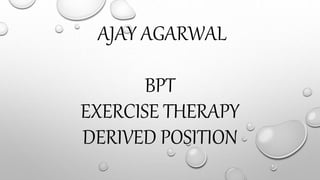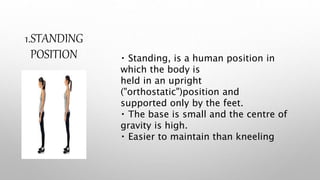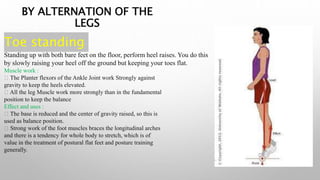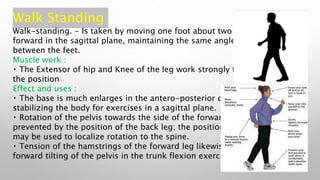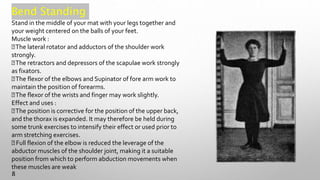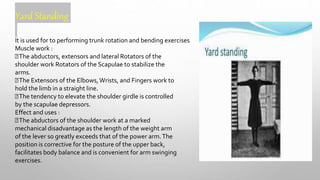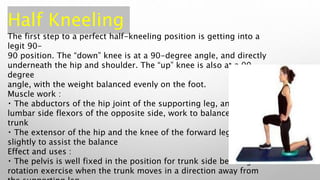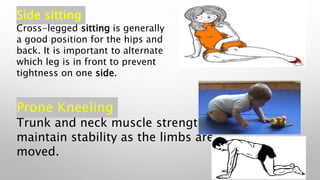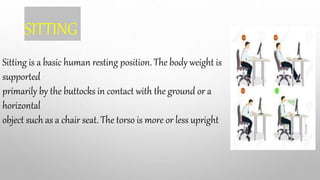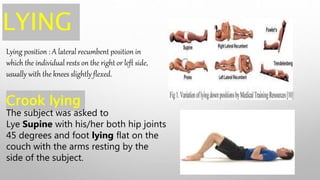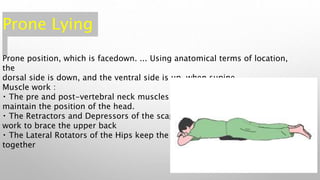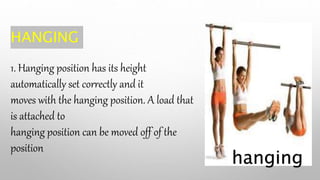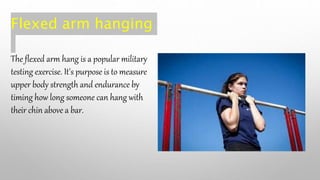There are five fundamental body positions discussed in the document: sitting, standing, kneeling, lying, and hanging. For each position, variations are described that involve changing the position of different body parts like the legs, trunk, arms, and pelvis. The key muscle groups worked and effects of each position are explained. Positions like stride standing, walk standing, and wing standing provide increased stability for exercises by changing the base of support. Others like stoop standing and lax stoop standing are useful for stretching or relaxation.
